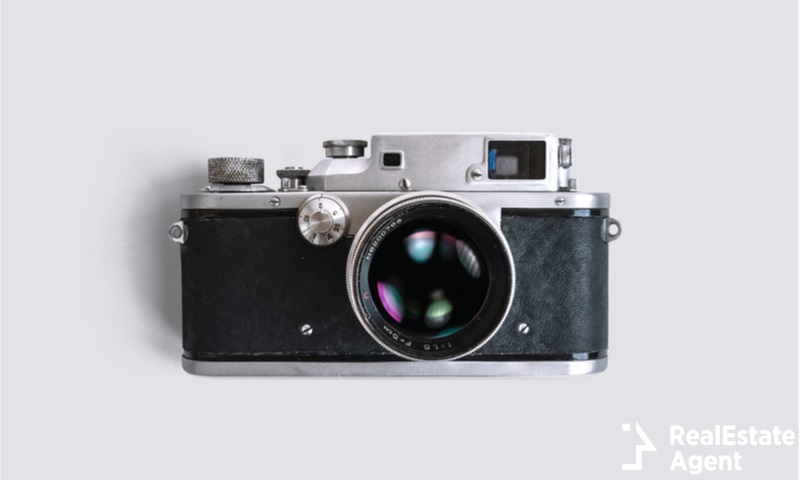If you’ve had your ear to the ground in the world of photography this past couple of years, you may have noticed something: film photography is making a comeback! From wannabe hipsters to nostalgic old-timers, everyone seems to be going back to their photography roots with analogue photography and film stock.
There’s a lot to be said to the credit of film photography. While it doesn’t boast all of the technical and practical advantages of digital, there’s an undeniable joy that comes with shooting on film that you simply can’t replicate with more modern cameras. Take a few shots on a friend’s analogue camera and you’ll quickly realize just how much fun film photography can be!
The world of film photography offers nearly unlimited possibilities when it comes to expanding your knowledge of the art and finding new ways to express yourself through it. Whether you’re interested in finding fascinating new experimental techniques or starting your very own vintage analogue camera collection, you’ll never run out of ways to enjoy this pastime.
Once you’ve dipped your toes into the waters of analogue photography, this immense variety and range of techniques can leave you feeling dazed and confused, overwhelmed by all of this sheer potential. If you’re a complete beginner with no experience in analogue photography, this imposing freedom may be enough to deter you from trying at all. Don’t give up just yet though; if you’re willing to stick with it, we’re here to help.
Film photography lingo
Before we get started with this guide in earnest, we’ve got to get you in the know on film camera terminology. Throughout this article we’ll be using these terms frequently, so you’ll need to know what they mean. You may already know some of them, but we want to cover all of our bases nonetheless. Let’s get started!
SLR: A camera that uses a mirror and prism to allow the photographer to focus and view the subject with greater ease. Typically characterized by interchangeable lenses and the inclusion of manual or semi-manual function.
Point-and-shoot A type of compact and portable camera that is simple and intuitive to use. Generally includes some type of autofocus in addition to a flash and simple viewfinder. Lenses on point-and-shoot cameras are usually wide angle, adding a great deal of versatility.
Film stock: Photosensitive cellophane film that comes in a variety of color palates and sensitivity levels. This is what you’ll be loading into your camera and using to take pictures.
ISO: A measure of a film stock’s sensitivity to light. The higher the number, the higher the sensitivity. High sensitivity film nets you better performance in low light, but more grainy images. Lower sensitivity film yields less grain and better performance in well lit environments.
Development: The process of submerging exposed film in a series of chemical solutions to prepare it for further processing.
Scanning: Using a specially designed film scanning machine to digitize developed film.
Where to begin, where to begin
If you’re still here, good for you! You might not know exactly what all is going on, but you’re willing to stick around and find out. We applaud your persistence, and we’re here to give you a good place to start. This article isn’t a comprehensive guide to everything analogue photography has to offer (such an article would likely occupy several volumes), but it’ll give you a solid place to start so you have a base of operations while you explore.
Finding the right camera
The best place to start with analogue photography is by purchasing a camera. There are thousands of options available, ranging from compact and simple point-and-shoot 35mm variants to fully manual 120mm format cameras on the market, but you don’t have to worry about all that just yet.
Unless you have some prior experience with film photography, you’ll probably want to start with a compact 35mm point-and-shoot camera. These cameras are generally very easy to use, while still retaining that quintessential film photography color palate and feeling. They’re also quite inexpensive for the most part, so you won’t have to break the bank to get one.
As for where you can find such a camera, there are a number of options. Buying one online from vendors on Amazon or Ebay will generally get you one at a fair price and working condition, while thrift stores, antique shops will allow you to get better deals, albeit at the risk of wasting your money on a camera that doesn’t work properly.
Choosing the right film stock
Once you’ve purchased a decent, working analogue camera, it’s time to choose a film stock. You can’t really do anything wrong here, but there are certain things to avoid in order to get the most out of your initial investment and first steps towards being a competent film photographer. The film stock you choose will have a substantial impact on the color of your photos, as well as the amount of money you spend per frame.
For beginners, it’s generally best to choose an inexpensive and widely available film stock like Fujifilm C200 or Kodak Ultramax 400. Both offer a good balance of image quality and affordability, so mistakes don’t end up costing you too much. Film photography can be tricky, and there’s a good chance you’ll waste a couple rolls of film before you finally get the hang of it. Trust us on this: blanking a $30 roll of film feels way worse than blanking one that costs $5!
Cheaper film stocks generally have lower sensitivity, making them suitable for outdoor photography or well lit indoor photography. If you want to shoot at night or in other low light situations, you’ll either need to invest in some more expensive high-ISO film or an external flash (unless your camera has a built-in flash, of course).
Choosing the right subjects
This step is a lot harder to define than the previous two, because it depends entirely on what you want to take pictures of! There are so many different types of photography you can choose when you’ve got a film camera, and you can try out as many of them as you’d like. Ultimately, it just comes down to how you want to express yourself, and how you can make your photos your own and no one else’s. It’s even a great way to relieve stress!
For beginners, landscapes and casual portraits can help you learn the basics of shooting on film while providing you with awesome photos you can share with friends and family. Take some friends out on a forest excursion and snap as many photos as you’d like along the way; at this point, it’s all about preserving memories and having fun!
Once you get comfortable with these kinds of pictures, you can try others. Street photography is quite difficult to master, but can result in spectacular photos and unique experiences. Art and experimental photography, on the other hand, offer you an opportunity to create unique and otherworldly images that only you could create. This is just the tip of the analogue photography iceberg; once you start, it’ll be difficult or impossible to stop!
Conclusion
There’s little question that analogue photography is a lot of fun. With more and more people joining the community every day, you can always count on your more experienced counterparts to help you out with advice and direction when you feel lost or unenthused. Film is best enjoyed with friends! We hope we’ve helped you get a better understanding of what film photography is and how you can get into the hobby for yourself, and wish you the best of luck!












